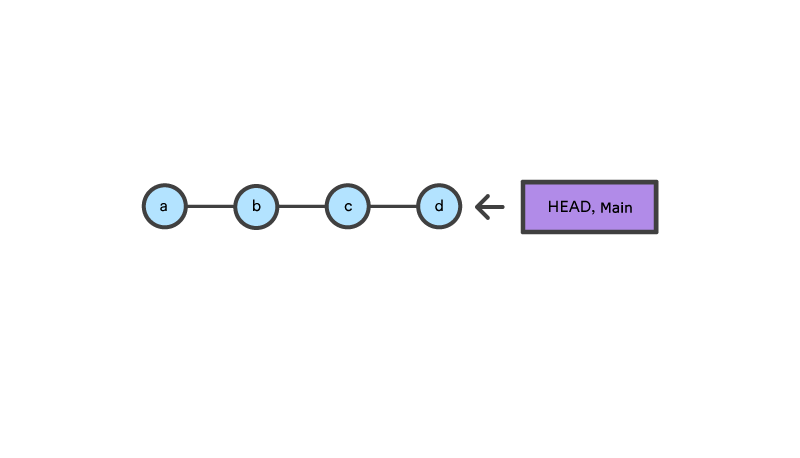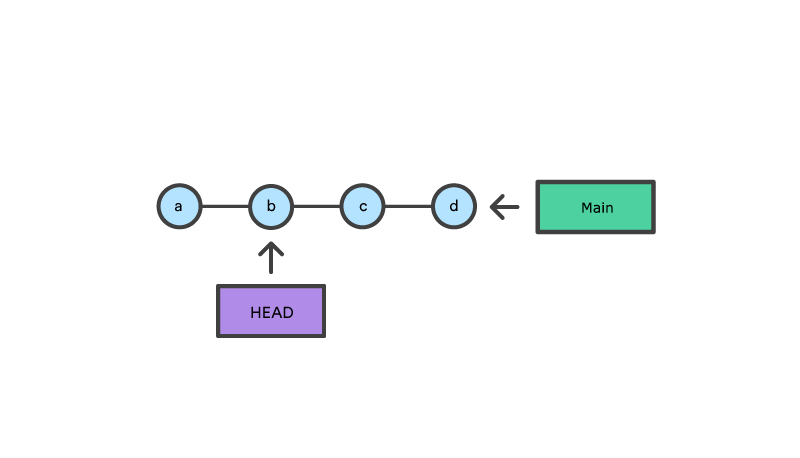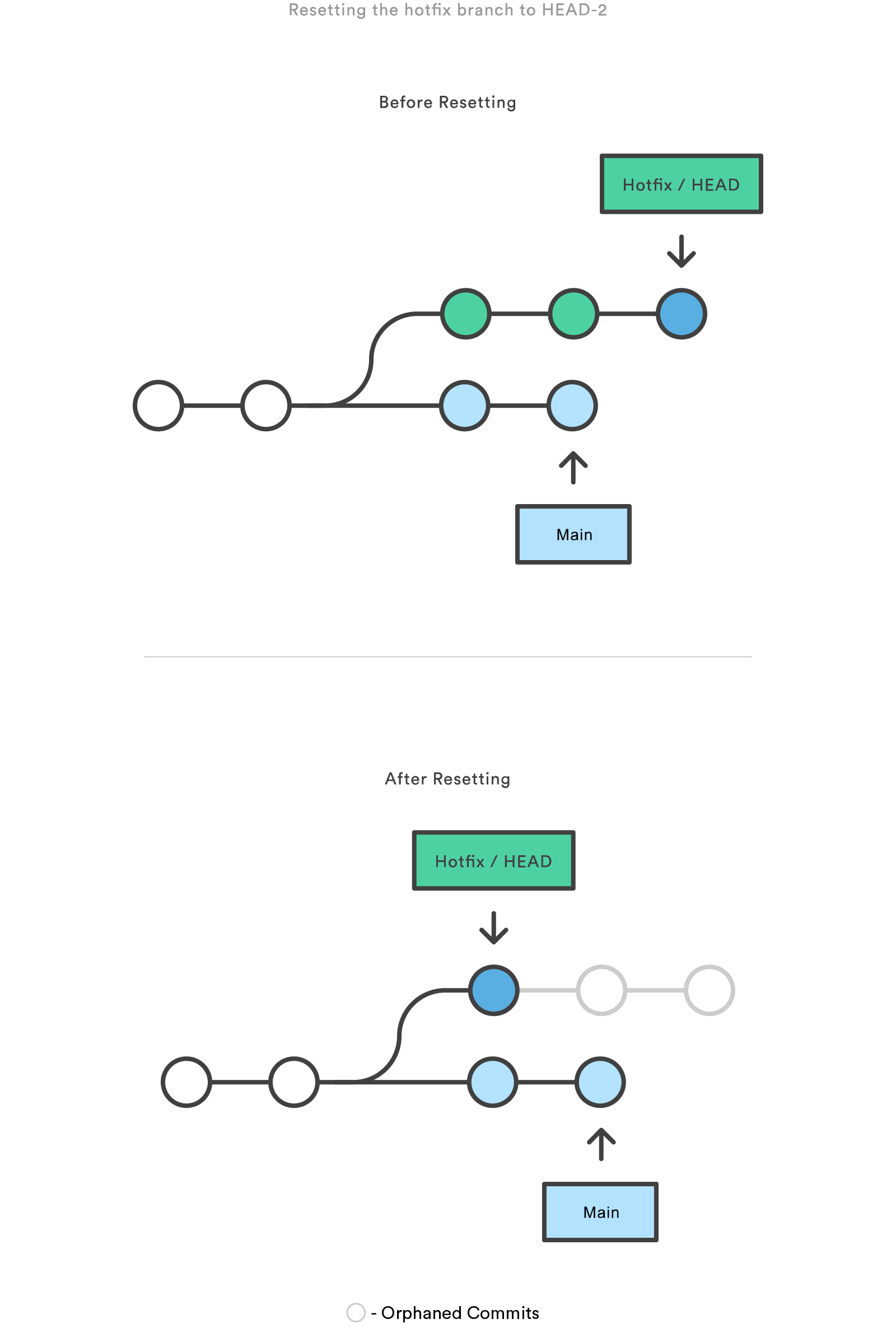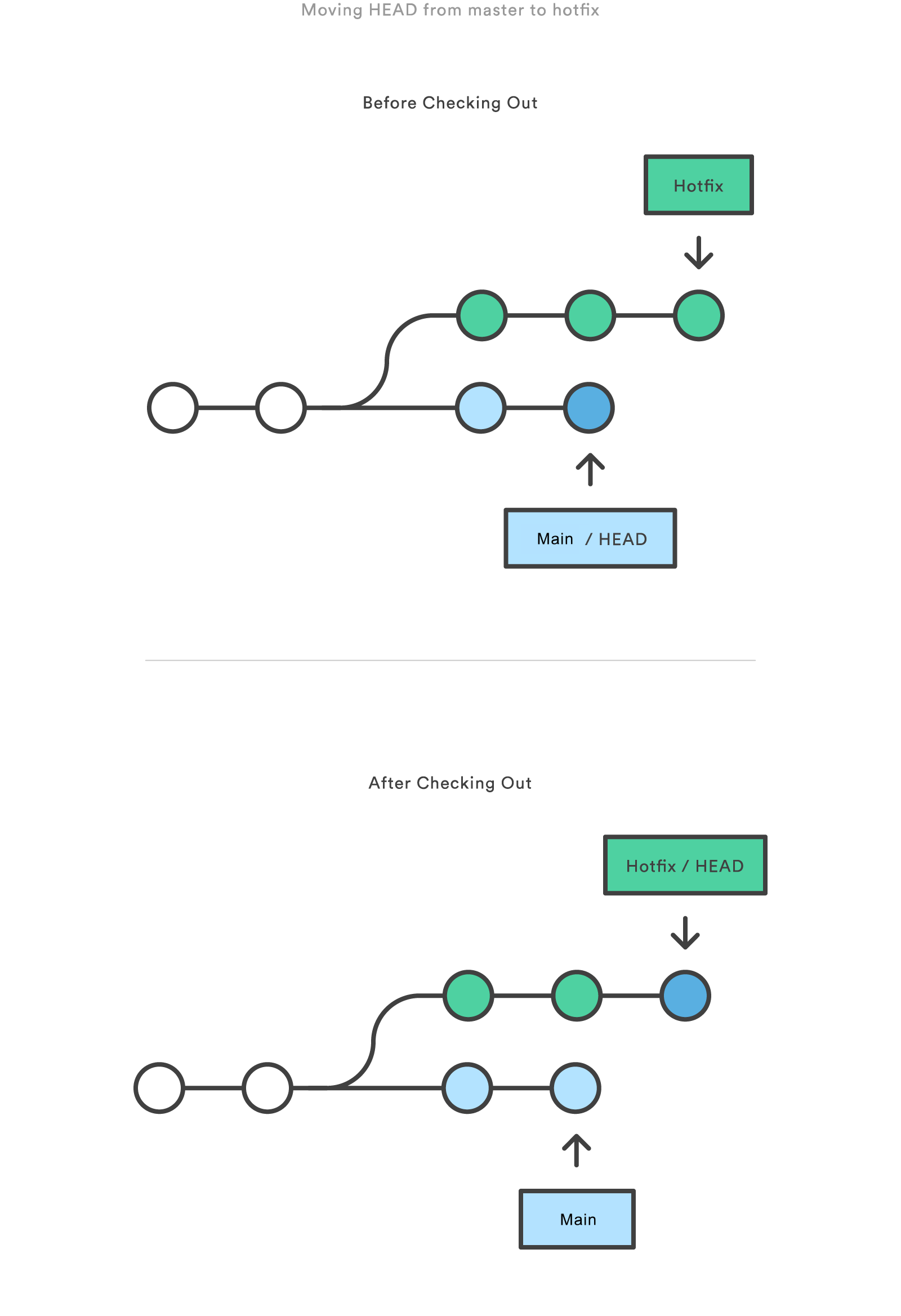How To Change The Head Of A Git File
The git reset, git checkout, and git revert commands are some of the well-nigh useful tools in your Git toolbox. They all let you lot undo some kind of alter in your repository, and the showtime ii commands tin be used to manipulate either commits or individual files.
Because they're so similar, information technology's very easy to mix up which command should be used in any given development scenario. In this article, we'll compare the nearly common configurations of git reset, git checkout, and git revert. Hopefully, you'll walk away with the conviction to navigate your repository using whatever of these commands.
Information technology helps to think most each command in terms of their effect on the three country management mechanisms of a Git repository: the working directory, the staged snapshot, and the commit history. These components are sometimes known as "The iii copse" of Git. We explore the iii copse in depth on the git reset page. Keep these mechanisms in mind every bit you read through this article.
A checkout is an operation that moves the HEAD ref arrow to a specified commit. To demonstrate this consider the following example.

This example demonstrates a sequence of commits on the primary co-operative. The Head ref and master branch ref currently point to commit d. Now let us executegit checkout b

This is an update to the "Commit History" tree. The git checkout command can exist used in a commit, or file level telescopic. A file level checkout will change the file'southward contents to those of the specific commit.
A revert is an operation that takes a specified commit and creates a new commit which inverses the specified commit. git revert can but be run at a commit level scope and has no file level functionality.
A reset is an performance that takes a specified commit and resets the "three trees" to lucifer the state of the repository at that specified commit. A reset can be invoked in three different modes which stand for to the three trees.
Checkout and reset are generally used for making local or private 'undos'. They modify the history of a repository that can cause conflicts when pushing to remote shared repositories. Revert is considered a safe operation for 'public undos' as information technology creates new history which can exist shared remotely and doesn't overwrite history remote team members may exist dependent on.
Git Reset vs Revert vs Checkout reference
The tabular array below sums up the most common employ cases for all of these commands. Exist certain to keep this reference handy, as you'll undoubtedly need to utilize at to the lowest degree some of them during your Git career.
| Command | Scope | Common use cases |
|---|---|---|
git reset | Commit-level | Discard commits in a individual branch or throw away uncommited changes |
git reset | File-level | Unstage a file |
git checkout | Commit-level | Switch betwixt branches or inspect old snapshots |
git checkout | File-level | Discard changes in the working directory |
git revert | Commit-level | Disengage commits in a public branch |
git revert | File-level | (North/A) |
Commit Level Operations
The parameters that you laissez passer to git reset and git checkout determine their scope. When you don't include a file path every bit a parameter, they operate on whole commits. That'south what we'll be exploring in this section. Note that git revert has no file-level counterpart.
Reset A Specific Commit
On the commit-level, resetting is a style to movement the tip of a branch to a different commit. This can be used to remove commits from the electric current branch. For example, the following control moves the hotfix branch backwards by two commits.
git checkout hotfix git reset Head~2 The two commits that were on the cease of hotfix are now dangling, or orphaned commits. This means they will be deleted the next time Git performs a garbage collection. In other words, you lot're saying that y'all want to throw away these commits. This tin be visualized equally the post-obit:

This usage of git reset is a simple way to disengage changes that haven't been shared with anyone else. It's your go-to command when you've started working on a feature and find yourself thinking, "Oh crap, what am I doing? I should but first over."
In addition to moving the electric current branch, you tin can also become git reset to modify the staged snapshot and/or the working directory past passing information technology 1 of the following flags:
-
--soft– The staged snapshot and working directory are not altered in whatever style. -
--mixed– The staged snapshot is updated to match the specified commit, only the working directory is not affected. This is the default option. -
--hard– The staged snapshot and the working directory are both updated to match the specified commit.
Information technology's easier to think of these modes as defining the scope of a git reset performance. For farther detailed data visit the git reset page.
Checkout onetime commits
The git checkout control is used to update the state of the repository to a specific point in the projects history. When passed with a branch name, it lets yous switch between branches.
git checkout hotfix Internally, all the to a higher place command does is move Head to a dissimilar branch and update the working directory to match. Since this has the potential to overwrite local changes, Git forces y'all to commit or stash any changes in the working directory that will be lost during the checkout operation. Unlike git reset, git checkout doesn't movement whatsoever branches around.

You can likewise check out arbitrary commits past passing the commit reference instead of a branch. This does the exact aforementioned matter as checking out a branch: information technology moves the HEAD reference to the specified commit. For case, the following control volition cheque out the grandparent of the electric current commit:
git checkout HEAD~2
This is useful for quickly inspecting an old version of your project. However, since there is no branch reference to the current HEAD, this puts you in a discrete Caput state. This can be dangerous if yous get-go adding new commits because there will exist no way to get back to them after you switch to another branch. For this reason, yous should always create a new co-operative before calculation commits to a detached Caput.
Undo Public Commits with Revert
Reverting undoes a commit past creating a new commit. This is a rubber way to undo changes, equally it has no chance of re-writing the commit history. For example, the following control volition effigy out the changes contained in the 2nd to last commit, create a new commit undoing those changes, and tack the new commit onto the existing project.
git checkout hotfix git revert HEAD~2 This tin be visualized as the post-obit:
Contrast this with git reset, which does alter the existing commit history. For this reason, git revert should be used to disengage changes on a public branch, and git reset should be reserved for undoing changes on a private branch.
You can also recollect of git revert as a tool for undoing committed changes, while git reset HEAD is for undoing uncommitted changes.
Like git checkout, git revert has the potential to overwrite files in the working directory, and then information technology will ask y'all to commit or stash changes that would be lost during the revert operation.
File-level Operations
The git reset and git checkout commands likewise take an optional file path as a parameter. This dramatically alters their beliefs. Instead of operating on unabridged snapshots, this forces them to limit their operations to a single file.
Git Reset A Specific File
When invoked with a file path, git reset updates the staged snapshot to match the version from the specified commit. For case, this command volition fetch the version of foo.py in the 2nd-to-concluding commit and stage information technology for the next commit:
git reset HEAD~two foo.py Every bit with the commit-level version of git reset, this is more than commonly used with HEAD rather than an arbitrary commit. Running git reset Caput foo.py will unstage foo.py. The changes it contains will still be present in the working directory.
The --soft, --mixed, and --hard flags do non accept any effect on the file-level version of git reset, as the staged snapshot is ever updated, and the working directory is never updated.
Git Checkout File
Checking out a file is like to using git reset with a file path, except it updates the working directory instead of the phase. Unlike the commit-level version of this command, this does not move the HEAD reference, which ways that you won't switch branches.
For instance, the following command makes foo.py in the working directory lucifer the one from the 2nd-to-terminal commit:
git checkout Caput~two foo.py Only similar the commit-level invocation of git checkout, this can be used to audit erstwhile versions of a project—but the scope is limited to the specified file.
If you lot stage and commit the checked-out file, this has the effect of "reverting" to the erstwhile version of that file. Note that this removes all of the subsequent changes to the file, whereas the git revert command undoes only the changes introduced by the specified commit.
Similar git reset, this is usually used with HEAD as the commit reference. For instance, git checkout Head foo.py has the result of discarding unstaged changes to foo.py. This is similar behavior to git reset HEAD --hard, but it operates only on the specified file.
Summary
Y'all should now have all the tools you could always need to undo changes in a Git repository. The git reset, git checkout, and git revert commands can be confusing, but when yous think about their furnishings on the working directory, staged snapshot, and commit history, it should exist easier to discern which command fits the development job at mitt.
Source: https://www.atlassian.com/git/tutorials/resetting-checking-out-and-reverting
Posted by: simonsmurge2001.blogspot.com


0 Response to "How To Change The Head Of A Git File"
Post a Comment